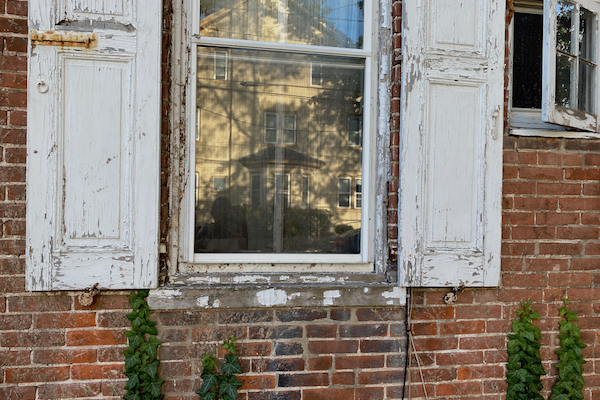Once lead paint is on a wall, it becomes an expensive problem to fix. In impoverished settings, be they neighborhoods in Philadelphia or developing nations globally, remediation can be prohibitively costly.
While removing lead paint poses a daunting challenge, preventing it from being used in the first place is much easier.
That’s the reasoning behind a new publication from the United Nations Environment Programme (UNEP), coauthored by Penn faculty members Reto Gieré, Richard Pepino, and Marilyn Howarth, working with experts from the United States Environmental Protection Agency (EPA) and the Global Council for Science and the Environment. In a public-facing Foresight Brief, the scientists call for the eradication of lead paint worldwide to prevent lead poisoning, the cause of more than a million deaths each year.
“This would be very simple to do, and in a way that’s the frustrating thing,” says Gieré, the first author on the paper and a professor in Penn’s Department of Earth and Environmental Science. “Stopping the use of lead paint is one of the easiest problems to take care of and at the same time lead paint remains one of the primary sources of lead exposure, especially for kids. It is urgent that every country has a law banning its use.”
While the U.S. has had a ban on lead-based paints for residential use since 1978, and many other countries have similar laws in place, the use of lead paint is still permitted in 60% of all countries globally.
“Lead paint causes serious harm to children with lifelong consequences, yet is largely unregulated in the developing world,” says Walker Smith, a coauthor on the paper and principal international advisor in the EPA’s Office of International and Tribal Affairs. “The Global Alliance to Eliminate Lead Paint is a UN partnership working to remove this harm by helping countries develop lead paint laws. We hope that this article will raise awareness of the serious problem caused by lead paint, that children can be protected from exposure to lead paint through the enactment of laws, and that the Alliance can offer assistance in developing those laws.”
Lead paint used to be a popular choice for several reasons. Certain pigments that gave the paint bright, vibrant colors consisted of lead-containing minerals. Lead is cheap and widely available, and lead-based compounds can make paints fast-drying and durable.
Yet substitutes exist that possess these same qualities, without the neurotoxic dangers of lead. “The overall costs of switching to synthetic alternatives are minimal, and the benefits are huge,” Gieré says.
Making a switch could have a significant public health impact, the authors say. Lead poses its greatest risks to young children, who are more likely than adults to be exposed to chipping lead paint or lead dust as they crawl and toddle around their homes, and whose developing bodies and brains are particularly vulnerable to its effects. Even low-level exposure to lead can cause diminished learning ability and increased behavioral problems. High levels of ingestion can be fatal.
Last year, Penn became a member of the Global Alliance to Eliminate Lead Paint, run through the World Health Organization and the UNEP. The Alliance has worked to encourage countries to take action on lead threats, and has support from paint industry groups as well. In addition, the UN has drafted a model law for countries to adopt in order to facilitate the ban on lead-paint production, sale, and importation.
The authors hope to reach policy makers, public health and environmental professionals, industry leaders, and others to build momentum and encourage more governments to introduce laws,and enforce them.
“More and more countries are coming on board with this,” says Gieré. “Governments are starting to recognize the problem and are jumping on the bandwagon. This is a call for them to act, and they have to be willing to introduce legislation.”
Reto Gieré is a professor in the School of Arts & Sciences’ Department of Earth and Environmental Science at the University of Pennsylvania.
Marilyn Howarth is an adjunct associate professor of emergency medicine and systems pharmacology and translational therapeutics and is director of community engagement at the Center of Excellence in Environmental Toxicology in Penn’s Perelman School of Medicine.
Richard Pepino is deputy director of the community engagement core of CEET and coordinator of the Academically Based Community Service courses in the Schools of Arts and Sciences’ Department of Earth and Environmental Science at Penn.








